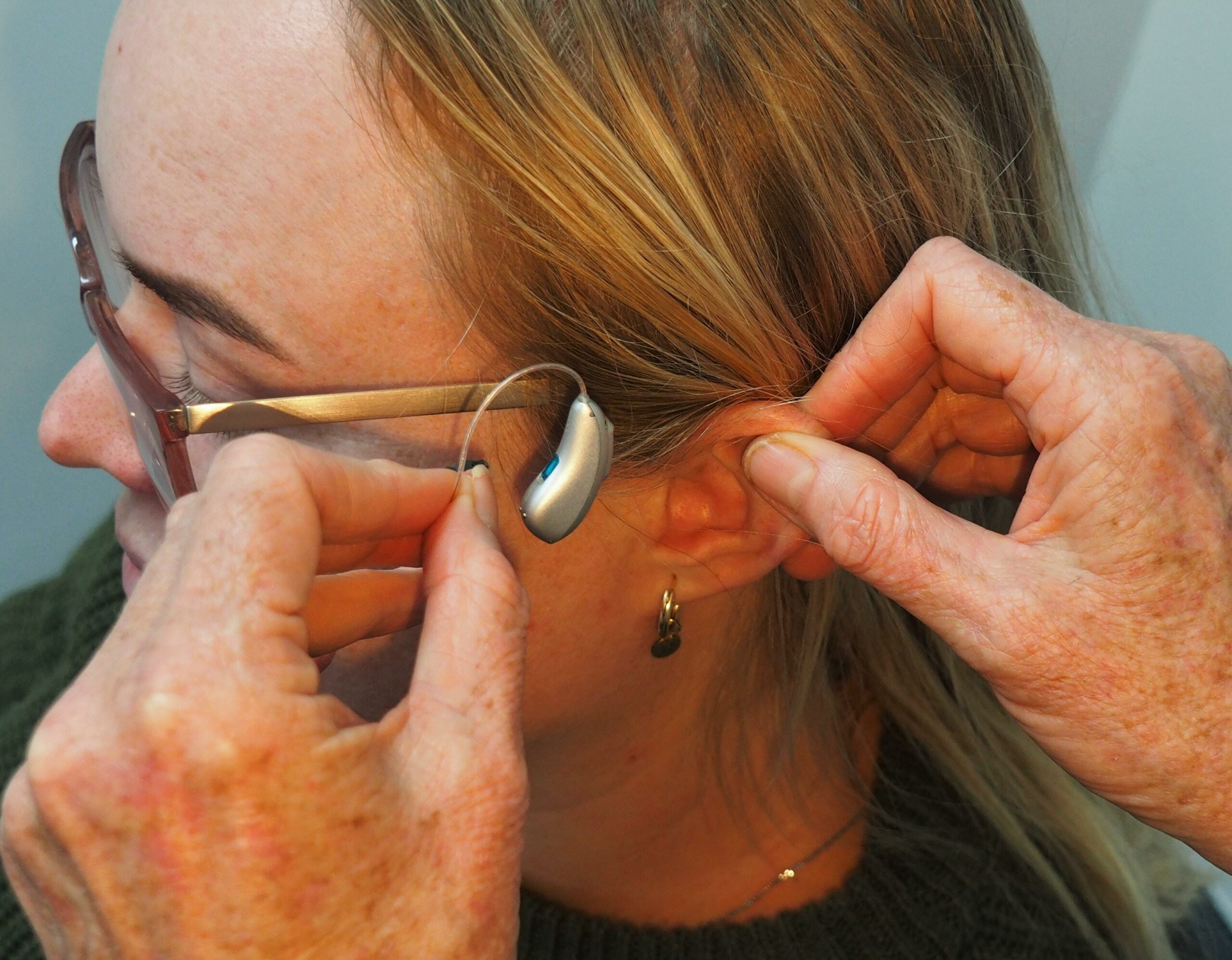Welcome to a world of fascinating facts that will open your ears to the wonders of audiology. In this article, we dive deep into the realm of audiology to uncover intriguing and lesser-known fun facts that will leave you amazed. Prepare to be captivated by the wonders of the human ear, the science behind hearing loss, and the extraordinary advancements in audiology. So, join us on this journey as we unravel the mysteries and discover the fascinating fun facts that make audiology such an enthralling field in 2021.

Audiology Fun Facts
Did you know that the smallest bones in the human body are located in your ears? The malleus, incus, and stapes, also known as the hammer, anvil, and stirrup, are so tiny that they can actually fit on a penny! These three bones play a crucial role in transmitting sound vibrations from the eardrum to the inner ear, allowing us to hear the world around us.
But did you ever wonder if your ears take a break while you sleep? The answer is no! While you’re catching some Z’s, your ears are still hard at work processing sounds. In fact, your brain continues to interpret and respond to any auditory stimuli it receives, even if you’re not consciously aware of it. So don’t be surprised if you wake up to the sound of your alarm clock or a chirping bird outside your window. Your ears never really sleep!
Let’s talk about the speed of sound. Did you know that sound waves travel at an astonishing speed of 1,130 feet per second or 770 miles per hour? To put this into perspective, it means that sound can travel from one end of a football field to the other in just a few seconds. So the next time you’re at a concert or watching a movie, think about how quickly the sound reaches your ears, allowing you to enjoy the experience in real-time.
Hearing loss is a prevalent health problem, ranking as the third most common issue in the United States. It affects millions of people of all ages, and the reasons for hearing loss can vary. One leading cause is excessive noise exposure. When we’re exposed to loud sounds for extended periods, it can damage the delicate structures in our ears and lead to permanent hearing loss. So remember to protect your ears by using earplugs or keeping the volume at a safe level when you’re in a noisy environment.
Unfortunately, children are not immune to hearing loss either. In fact, did you know that 37% of children with hearing loss fail at least one grade? This highlights the importance of early detection and intervention for children with hearing loss. By identifying hearing issues early on, professionals in the field of audiology can help children receive the necessary support and accommodations to succeed academically and socially.
To sum it up, audiology is a fascinating field with many incredible fun facts. From the tiny bones in your ears to the speed at which sound travels, there’s so much to discover and appreciate. So whether you’re curious about how your ears work or interested in learning more about hearing loss prevention, audiology is a topic that deserves our attention. Remember, understanding audiology not only enriches our knowledge but also empowers us to take better care of our hearing health.
“The malleus, incus, and stapes are not only the smallest bones in the human body but also the unsung heroes of hearing, vibrating to transmit sound waves with grace and precision.”
Audiologists play a vital role in the field of healthcare, specializing in diagnosing and treating a variety of hearing and balance disorders. If you’re curious to learn more about these dedicated professionals and the fascinating facts about audiologists, click here to uncover a wealth of information: facts about audiologists. Delve into the world of audiology and discover the incredible work that these experts do to improve the quality of life for individuals with hearing impairments. Whether you’re considering a career in audiology or simply seeking knowledge, this link will provide you with valuable insights into the domain of audiologists.
Audiology Fun Facts are a fascinating way to delve into the world of auditory health. Have you ever wondered about the vital role of audiologists in our lives? Discover the enlightening information about the role of audiologists and how they contribute to our overall well-being and auditory health. Click here to learn more: Role of audiologists.
Moreover, understanding the importance of auditory health is crucial for maintaining a high quality of life. Dive into the realm of auditory health and its significance in our daily lives, exploring the implications it has on communication, emotional well-being, and social interactions. To unlock the secrets behind auditory health, click here: Importance of auditory health.
Intrigued by audiology misconceptions? It’s time to debunk them and unravel the truth! Unveil the myths surrounding audiology and explore the reality behind these misconceptions. Discover the fascinating truths about audiology and its vital role in our lives. Click here to separate fact from fiction: Debunking audiology misconceptions.
Audiology Fun Facts are waiting to be explored! Embark on a journey through the captivating realm of auditory health and audiology. Immerse yourself in the intriguing world of audiology, empowering yourself with knowledge and awareness. Click on the links above to uncover a wealth of information about the role of audiologists, the importance of auditory health, and debunking audiology misconceptions.
The Science of Hearing: How Sound Travels Through the Ear and Brain
[youtube v=”LkGOGzpbrCk”]
Introduction
"The science of hearing - Douglas L. Oliver"
The intricate process of how we hear goes beyond just detecting sounds. It involves the collaboration of our ears and brain, working together to convert sound energy into neural signals and interpret them as specific sounds. Understanding the science of hearing allows us to appreciate the remarkable capabilities of our auditory system and highlights the importance of taking care of our hearing health.
Journey of Sound through the Auditory System
Sounds start as vibrations and travel as waves of pressure through particles in the air, liquids, or solids. To enter the inner ear, which is filled with saltwater-like fluid, the sound waves must be converted into fluid waves. This conversion is achieved through the eardrum, or tympanic membrane, and the tiny bones in the middle ear. The eardrum vibrates when sound enters the ear canal, setting off a chain reaction of bone movements that ultimately create pressure waves in the fluid of the cochlea.
“The eardrum and middle ear bones work together to convert sound waves in the air into fluid waves in the cochlea.”
The Role of the Cochlea and Basilar Membrane
The cochlea, located in the inner ear, contains a structure called the basilar membrane that runs its entire length. This membrane is lined with hair cells that possess specialized components called stereocilia. As the fluid waves travel through the cochlea, the vibrations of the cochlear fluid and the basilar membrane cause the stereocilia to move. This movement triggers a signal that travels through the hair cells, into the auditory nerve, and eventually reaches the brain as a specific sound.
“The basilar membrane and hair cells convert fluid vibrations into electrical signals sent to the brain, allowing us to perceive different sounds.”
Selective Hair Cell Response
Not every hair cell in the cochlea responds to every sound. The location on the basilar membrane where the hair cells are stimulated depends on the frequency of the sound. High-frequency sounds cause the stiffer end of the basilar membrane to vibrate, while low-frequency sounds stimulate the more flexible end. This selective response resembles playing different keys on a piano.
“Only specific hair cells on the basilar membrane vibrate in response to different sound frequencies, enabling us to distinguish various sounds.”
Determining Sound Location
Our brain not only processes the sounds but also determines their location in space. It achieves this by comparing the sounds that reach our two ears. Sounds originating from directly in front of us reach both ears simultaneously and at the same intensity. However, sounds coming from one side will reach the ear closest to the source microseconds before the other ear, allowing our brain to calculate the location based on this time difference.
“The brain analyzes differences in sound timing and intensity between the ears to accurately locate the source of the sound.”
Challenges and Disorders in Hearing
While our hearing system is incredibly intricate, it is prone to challenges and disorders. Hearing loss is the third most common chronic disease worldwide and can be caused by exposure to loud noises or certain drugs. Osteoporosis and other conditions can freeze the tiny bones in the ear, preventing them from vibrating effectively. Additionally, tinnitus can cause the brain to perceive sounds that aren’t present. Early detection and intervention are crucial for children with hearing loss, as it can significantly impact their academic success.
“Hearing loss can result from various factors, and early detection is crucial for preventing further complications.”
Conclusion
Our ability to hear is a complex and fascinating process that involves the collaboration of our ears and brain. By understanding the science of hearing, we can gain a deeper appreciation for the intricate workings of our auditory system. Taking care of our hearing health and seeking prompt intervention when necessary are essential for maintaining optimal hearing abilities throughout our lives.
“The science of hearing reveals the remarkable capabilities of our auditory system and highlights the importance of preserving our hearing health.”
FAQ
Question 1
What are the smallest bones in the human body?
Answer 1
The malleus, incus, and stapes—commonly known as the hammer, anvil, and stirrup—are the smallest bones in the human body. Surprisingly, they are small enough to fit on a penny!
Question 2
Can we hear sounds while we are asleep?
Answer 2
Yes, our ears continue to hear sounds even while we are asleep. While our brain filters out certain sounds during sleep, it remains alert to important sounds like alarm clocks or a crying baby.
Question 3
How fast does sound travel?
Answer 3
Sound travels at an impressive speed of 1,130 feet per second or 770 miles per hour. That’s why we can hear thunder a few seconds after seeing the lightning.
Question 4
What is the third most common health problem in the United States?
Answer 4
Hearing loss is the third most common health problem in the United States. It affects millions of people of all ages and can significantly impact their quality of life.
Question 5
What is the number one cause of hearing loss?
Answer 5
Excessive noise exposure is the leading cause of hearing loss. Prolonged exposure to loud sounds, such as music concerts or machinery noise, can damage the delicate structures of the inner ear and result in hearing impairment.
- Mastering Leader in Spanish: The Complete Guide - April 19, 2025
- Uncovering Surprising Parallels: England Size Compared to US States - April 19, 2025
- Old Mexico Map: Border Shifts 1821-1857 - April 19, 2025
















